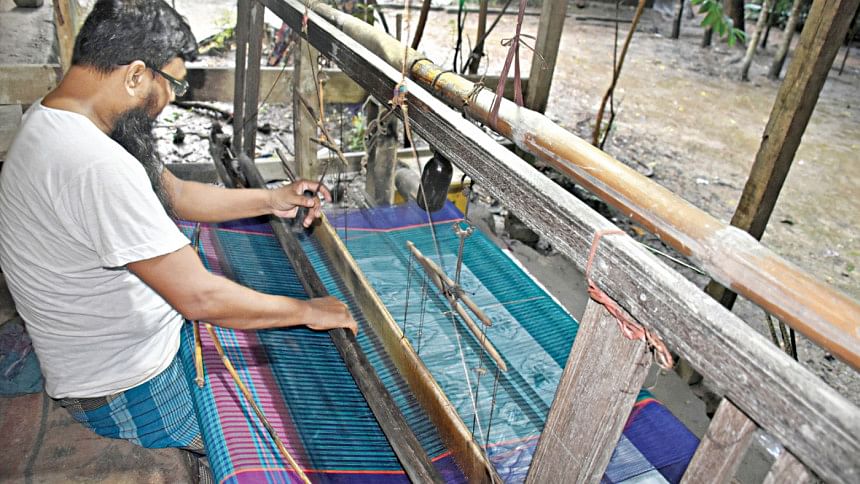Gani Mia’s Gamchha, a lasting legacy

Gani Mia's Gamchha is a brand of traditional cotton towel, or gamchha, made by hand in Jhalokati district of Barishal division. About 70 to 80 years ago, some 360 families that lived in the district's Basanda area were involved in weaving.
But as they were unable to compete with the rise of powerlooms, which led to the mass production of low-cost gamchhas, traditional weavers had to move on to other professions.
And now, there are just nine handlooms in the area that are used by three families to make the cotton towels.
Gani Mia's Gamchha is one such survivor that continues to thrive in the domestic market.
Gani Mia died in 2014 after 70 years in the trade, during which he was able to take the brand to unique heights.
"This is because the gamchha is durable and its colours do not fade," said Nasiruddin Mia, son of Gani Mia.
The towel is made of a high quality 40-thread count cotton yarn, making it more expensive than other gamchhas but more long lasting and comfortable at the same time, he added.
Modasser Mia, a resident of Basanda, said that Mohammad Mia, Gani Mia's grandfather, was the first to set up a handloom in the area back in 1940.
He also used to make saris back then, when the 'kolka' design was popular.
But after Gani Mia started weaving gamchhas, the traditional towels became popular, Modasser said.
After seeing his success, many other families started weaving cotton towels. At one time, the sound of weaving could be heard late into the night but as demand began to decline, many of them left the profession.
"Only Gani Mia's family continued this business for generations," he added.
According to weavers, five designs of the traditional towel have been around for eight years.
They are usually sold at Tk 350 at the retail level and Tk 300 at wholesale.
Nasiruddin said that due to the high demand for cheap towels, fake gamchhas are also being distributed under the name of Gani Mia's Gamchha.
"We are yet to sell our product nationwide due to limited production," he added.
"Currently, I have seven workers, with whom it is possible to make 100 towels per week. If we could get soft loans, production could be increased," Nasiruddin told The Daily Star.
A few banks showed interest at first but then eventually backed off, he said.
Jalish Mahamud, deputy general manager of the Bangladesh Small and Cottage Industries Corporation's (BSCIC) Barishal office, said they are ready to help the local businesses secure loans as traditional gamchhas are still popular.

 For all latest news, follow The Daily Star's Google News channel.
For all latest news, follow The Daily Star's Google News channel. 



Comments